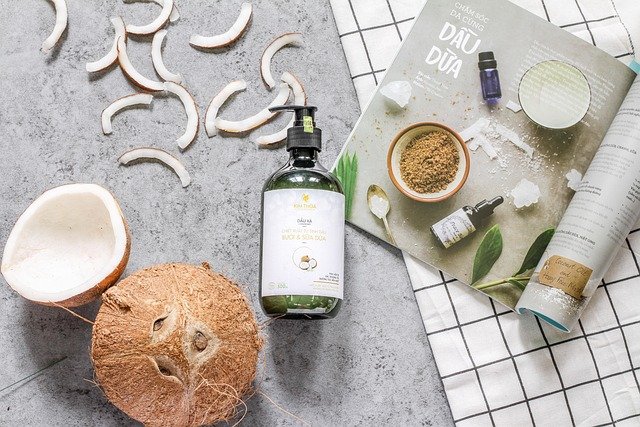The Rise of Clean Beauty: More Than Just a Trend
The beauty industry has undergone a significant transformation in recent years, with one of the most notable shifts being the rise of clean beauty. This movement, which emphasizes the use of natural, non-toxic ingredients and environmentally friendly practices, has rapidly gained momentum among consumers and brands alike. Clean beauty is not merely a passing fad but a fundamental change in how we approach skincare, cosmetics, and personal care products. It reflects a growing awareness of the potential health and environmental impacts of traditional beauty products, as well as a desire for greater transparency in ingredient sourcing and manufacturing processes. As consumers become more informed and discerning, the clean beauty movement has evolved from a niche market to a mainstream phenomenon, reshaping the landscape of the beauty industry and challenging long-standing practices.

However, the modern clean beauty movement gained significant traction in the early 2000s. This was partly due to increased awareness of potentially harmful ingredients in cosmetics, such as parabens, phthalates, and sulfates. Studies linking these chemicals to health issues and environmental concerns sparked a demand for safer alternatives.
The term “clean beauty” itself became popularized around 2015, coinciding with the rise of social media and increased access to information about product ingredients and manufacturing processes. This newfound transparency allowed consumers to make more informed choices about the products they use on their skin and bodies.
Defining Clean Beauty
One of the challenges in the clean beauty movement is the lack of a universally accepted definition. Generally, clean beauty refers to products that are made without ingredients that are known or suspected to be harmful to human health or the environment. This typically includes avoiding synthetic fragrances, certain preservatives, and harsh chemicals.
However, the definition can vary between brands and retailers. Some focus solely on the absence of certain ingredients, while others consider factors such as sustainability, ethical sourcing, and cruelty-free practices as part of their clean beauty ethos.
Many clean beauty advocates also emphasize the importance of transparency in ingredient lists and manufacturing processes. This includes clear labeling of all ingredients and disclosure of sourcing practices.
The Science Behind Clean Beauty
While the clean beauty movement has gained popularity, it has also faced criticism from some in the scientific community. Critics argue that “clean” doesn’t necessarily mean safer or more effective, and that many synthetic ingredients used in traditional beauty products are thoroughly tested and safe for use.
However, proponents of clean beauty point to the precautionary principle - the idea that if an ingredient has potential risks, it’s better to avoid it until it’s proven safe. They also highlight the cumulative effect of exposure to multiple chemicals through various products used daily.
Research in this area is ongoing, with studies examining the potential long-term effects of various cosmetic ingredients. Some clean beauty brands are investing in their own research and development to create effective, natural alternatives to synthetic ingredients.
The Impact on the Beauty Industry
The rise of clean beauty has had a profound impact on the beauty industry as a whole. Established brands have had to adapt, reformulating products to remove controversial ingredients and increasing transparency about their practices. Many have launched their own clean beauty lines to meet consumer demand.
New brands dedicated to clean beauty have also emerged, often founded by individuals frustrated with the lack of options in the traditional beauty market. These brands typically emphasize their ingredient choices, ethical practices, and commitment to sustainability.
Retailers have also responded to the trend. Sephora, for example, launched its “Clean at Sephora” program in 2018, which identifies products that meet certain clean beauty criteria. Other retailers have followed suit, creating dedicated clean beauty sections in stores and online.
Consumer Behavior and Clean Beauty
The clean beauty movement reflects broader changes in consumer behavior. Today’s consumers are more likely to research products before purchasing, reading ingredient lists and seeking out information about a brand’s practices.
Social media has played a significant role in this shift. Influencers and beauty bloggers often promote clean beauty products, educating their followers about ingredients and encouraging them to make more conscious choices.
However, the clean beauty movement has also faced criticism for potentially causing unnecessary fear about cosmetic ingredients and for sometimes making unsubstantiated claims about the benefits of natural ingredients.
The Future of Clean Beauty
As the clean beauty movement continues to grow, it’s likely to evolve further. We may see more stringent regulations around the use of certain ingredients in cosmetics, as well as increased standardization of what constitutes “clean” beauty.
Technology is also likely to play a larger role. Apps that allow consumers to scan product barcodes and instantly see ingredient information are already available, and this type of technology is likely to become more sophisticated.
Sustainability is another area where clean beauty is likely to expand. Many clean beauty brands are already focusing on reducing packaging waste and using renewable resources, a trend that’s likely to continue and intensify.
In conclusion, the rise of clean beauty represents a significant shift in the beauty industry, driven by changing consumer priorities and increased awareness of health and environmental issues. While challenges remain, including the need for more research and clearer standards, clean beauty has undoubtedly changed the way we think about and consume beauty products. As the movement continues to evolve, it has the potential to drive innovation and positive change throughout the beauty industry.





